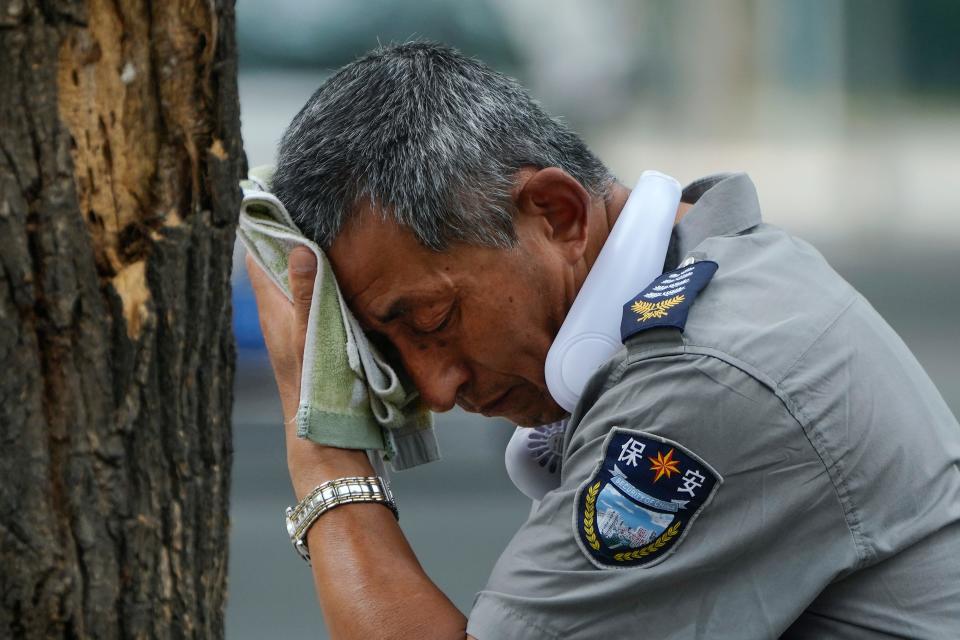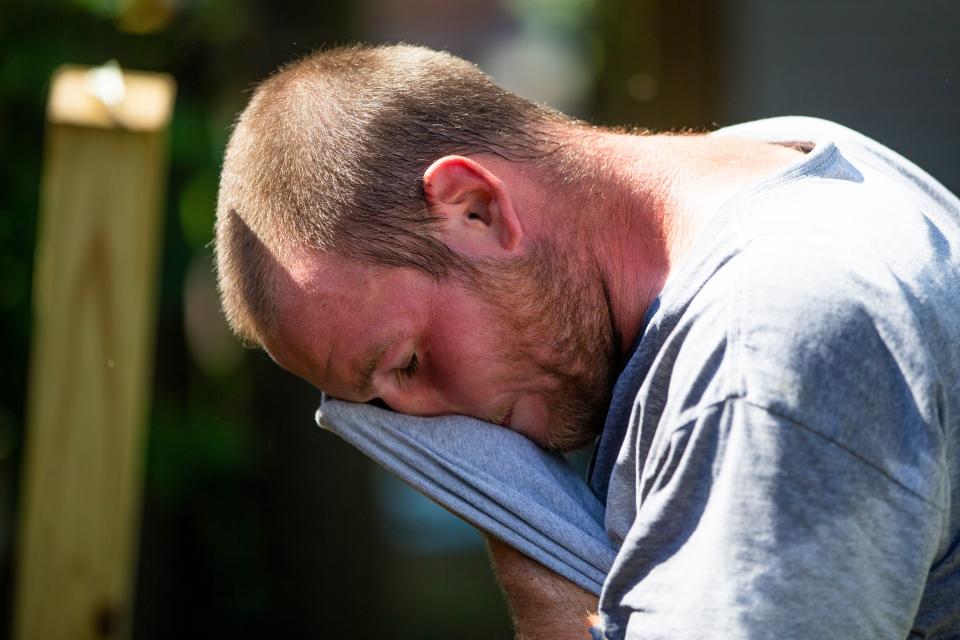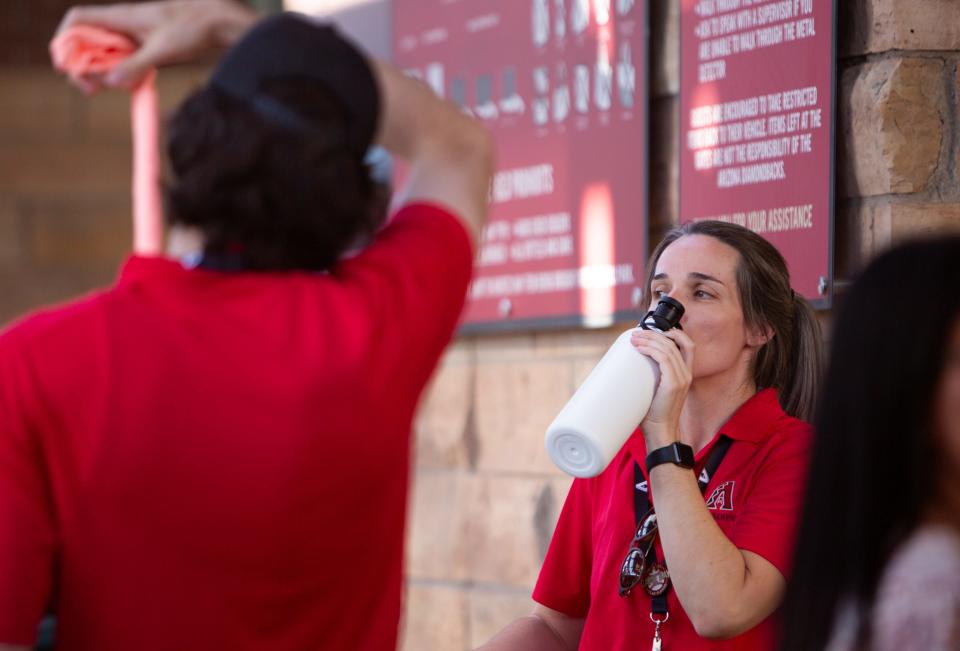It's a heat wave. Here's what you need to know about dehydration and how to fight it
The definition of dehydration is simple. You lose more fluid than you take in, which means your body does not have enough water to function properly. In general, the body is approximately 60% water, and although water does not provide any energy, vitamins, minerals, protein, etc., it is considered the most important nutrient because you cannot live long without it.
Estimates of the incidence of dehydration vary widely, but most experts agree that at least 25% of adults are seriously dehydrated, and as many as 75% are somewhat dehydrated. The problem is not only more likely to occur in older adults, but it also is likely to be more serious. There are several reasons for this, including taking multiple prescription drugs and health problems like Type 2 diabetes that cause excessive urination. There also are age-related changes in the body’s water and sodium balance resulting in a lower volume of water in the body, meaning a lower margin of error.
Mild dehydration is easily fixed by making it a point to drink more fluids. Unfortunately, mild hydration often is not apparent, and when it is ignored over a prolonged period it can become a serious problem. It can lead to urinary tract infections and kidney stones, and in extreme cases, there can be kidney failure.
What is heat stroke?

Severe dehydration may require immediate medical treatment. For example, older adults who are shut-ins without air conditioning can sweat excessively on hot days, even if they are not moving around. The body depends on the evaporation of sweat to keep the skin cool. However, without evaporation in a hot and humid apartment, sweating is nothing more than the loss of water from the body with no cooling effect. Even so, the body will keep sweating, leading to severe dehydration and a progressive elevation of body temperature. Heat stroke occurs when body temperature gets too high.
Here’s how it works: Typically, the body uses fluids surrounding the outside of cells as sweat. This so-called “interstitial fluid” is the body’s reservoir for sweat and in a hot environment, it constantly needs to be replenished. As interstitial fluid supplies dwindle from excess sweat loss and inadequate fluid replacement, the delicate fluid balance between the inside and outside of cells can be disrupted. This pulls fluid from the interior of cells to replenish the interstitial fluid reservoir used as sweat. This is dangerous and can’t go on for long because it can kill cells.

As sweating continues, water to be used as sweat must come from elsewhere, like the bloodstream, which reduces blood volume. This not only reduces blood pressure and oxygen delivery, the blood thickens which increases the concentration of blood components, especially electrolytes that can disrupt the electrical rhythm of the heart.
Ultimately, the body confronts a "Sophie’s Choice," meaning both choices are bad and either one will lead to death if circumstances continue unabated. The choices are to quit sweating to preserve blood volume, which means no evaporation of sweat to keep body temperature from rising too high. Or, if the body keeps sweating, the progressive loss of blood volume could be disastrous, leading to a lethal heart attack.
Is thirst a good indicator of dehydration?

Dehydration is often dismissed as a serious problem because the solution seems so simple and obvious. When you are thirsty, drink more. Problem solved. Unfortunately, this is not necessarily the case, and you cannot rely on thirst as a trustworthy indicator of the body’s need for water. There are two major reasons for this:
First, thirst is likely to underestimate the amount of fluid lost from the body. When I was younger, I could easily lose 6 pounds or more during late summer football practice, that’s the loss of at least 6 pints of water from my body. Back then, there was no such thing as water replacement during practices, and at most, if the practice was going well, the coach allowed us a small paper cup of water, just a few ounces, or an ice cube. When I got off the activity bus on the way home, I would go into a small store and buy two 16-ounce bottles of pop (what we called soda in Pittsburgh).
I would drink the pop and feel totally satisfied. The problem is, my body was still seriously low on fluid, but my thirst denied it. This means “forced drinking” (drinking even though you are not thirsty) is necessary to fully replenish fluids, and that’s the basis behind weighing in and out of practice as is done today. Your weight in and out determines pounds of water loss, and the trainer can make sure you bring your water level back up before the next practice.
Second, not only is thirst an unreliable indicator of lost fluid volume, it’s common for many people — especially older adults — to not feel thirsty until they are already dehydrated. And even then, although dangerously dehydrated, they typically will underestimate how much fluid to consume, because the thirst is too easily satisfied. Again, "forced drinking" is critically important.
What is the fastest way to cure dehydration?

Since thirst is not a reliable indicator of fluid need, checking body weight is a good idea. Consume one extra pint of fluid per pound of lost body weight. Note, do not consume any alcohol because even if you are dehydrated, alcohol will trigger a urination response, making dehydration worse. An excellent indicator is the color of your urine. A deep yellow color suggests severe dehydration, while clear urine suggests you are well hydrated.
Overall, the best advice is to be mindful of the need to drink, even when you are not thirsty. However, a word of caution. If you need to replace a huge amount of lost fluid and drink a lot, use either a sports drink or lightly salt the water (you won’t taste light salting). Consuming an excessive amount of water, especially in a short period of time, can dilute your electrolytes and possibly cause a condition known as hyponatremia that can result in swelling of the brain.
Reach Bryant Stamford, a professor of kinesiology and integrative physiology at Hanover College, at stamford@hanover.edu.
This article originally appeared on Louisville Courier Journal: It's a heat wave. Here's what to know about fighting dehydration

